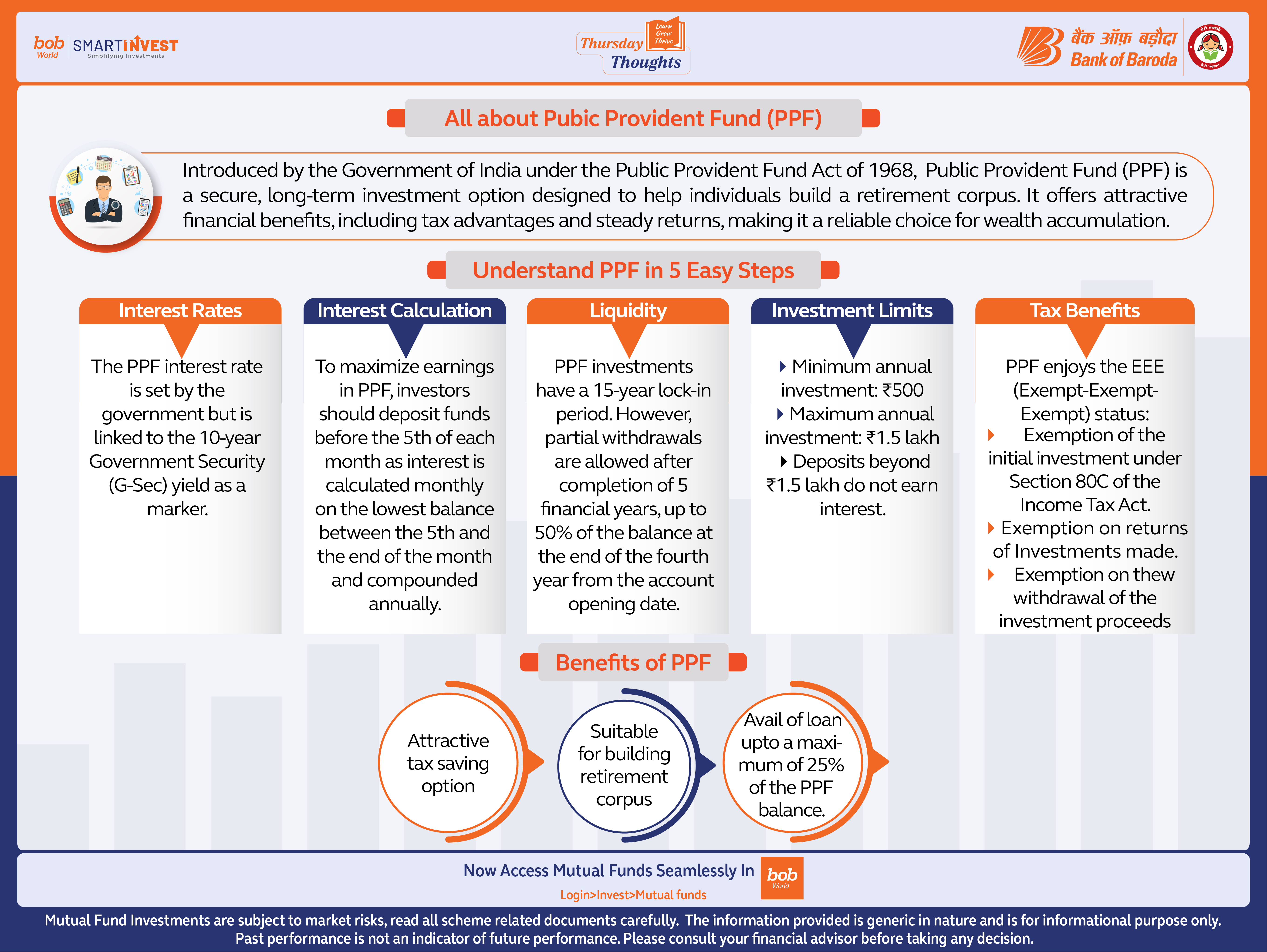
Public Provident Fund (PPF) – A Smart Investment for Long-Term Wealth
27 Mar 2025

All about Pubic Provident Fund(PPF)
Introduced by the Government of India under the Public Provident Fund Act of 1968, the Public Provident Fund (PPF) is a secure, long-term investment option designed to help individuals build a retirement corpus. It offers attractive financial benefits, including tax advantages and steady returns, making it a reliable choice for wealth accumulation.
Understand PPF in 5 Easy Steps
1. Interest Rates
The PPF interest rate is set by the government but is linked to the 10-year Government Security (G-Sec) yield as a marker.
2. Interest Calculation
To maximize earnings in PPF, investors should deposit funds before the 5th of each month as interest is calculated monthly on the lowest balance between the 5th and the end of the month and compounded annually.
3. Liquidity
PPF investments have a 15-year lock-in period. However, partial withdrawals are allowed after completion of 5 financial years, up to 50% of the balance at the end of the fourth year from the account opening date.
4. Investment Limits
- Minimum annual investment: ₹500
- Maximum annual investment: ₹1.5 lakh
- Deposits beyond ₹1.5 lakh do not earn interest.
5. Tax Benefits
PPF enjoys the EEE (Exempt-Exempt-Exempt) status:
- Exemption of the initial investment under Section 80C of the Income Tax Act.
- Exemption on returns of Investments made.
- Exemption on thew withdrawal of the investment proceeds
Benefits of PPF
- Attractive tax saving option
- Suitable for building retirement corpus
- Avail of loan upto a maximum of 25% of the PPF balance.
Mutual Fund Investments are subject to market risks, read all scheme related documents carefully. The information provided is generic in nature and is for informational purpose only. Please consult your financial advisor before taking any decision.
Read morePopular Infographics
Related Infographics









5 Simple Financial Resolutions for 2025: A Guide to Achieving Financial Security

-
Disclaimer
The contents of this article/infographic/picture/video are meant solely for information purposes and do not necessarily reflect the views of Bank of Baroda. The contents are generic in nature and for informational purposes only. It is not a substitute for specific advice in your own circumstances. Bank of Baroda and/ or its Affiliates and its subsidiaries make no representation as to the accuracy; completeness or reliability of any information contained herein or otherwise provided and hereby disclaim any liability with regard to the same. The information is subject to updation, completion, revision, verification and amendment and the same may change materially. The information is not intended for distribution or use by any person in any jurisdiction where such distribution or use would be contrary to law or regulation or would subject Bank of Baroda or its affiliates to any licensing or registration requirements. Bank of Baroda shall not be responsible for any direct/indirect loss or liability incurred by the reader for taking any financial decisions based on the contents and information mentioned. Please consult your financial advisor before making any financial decision.

